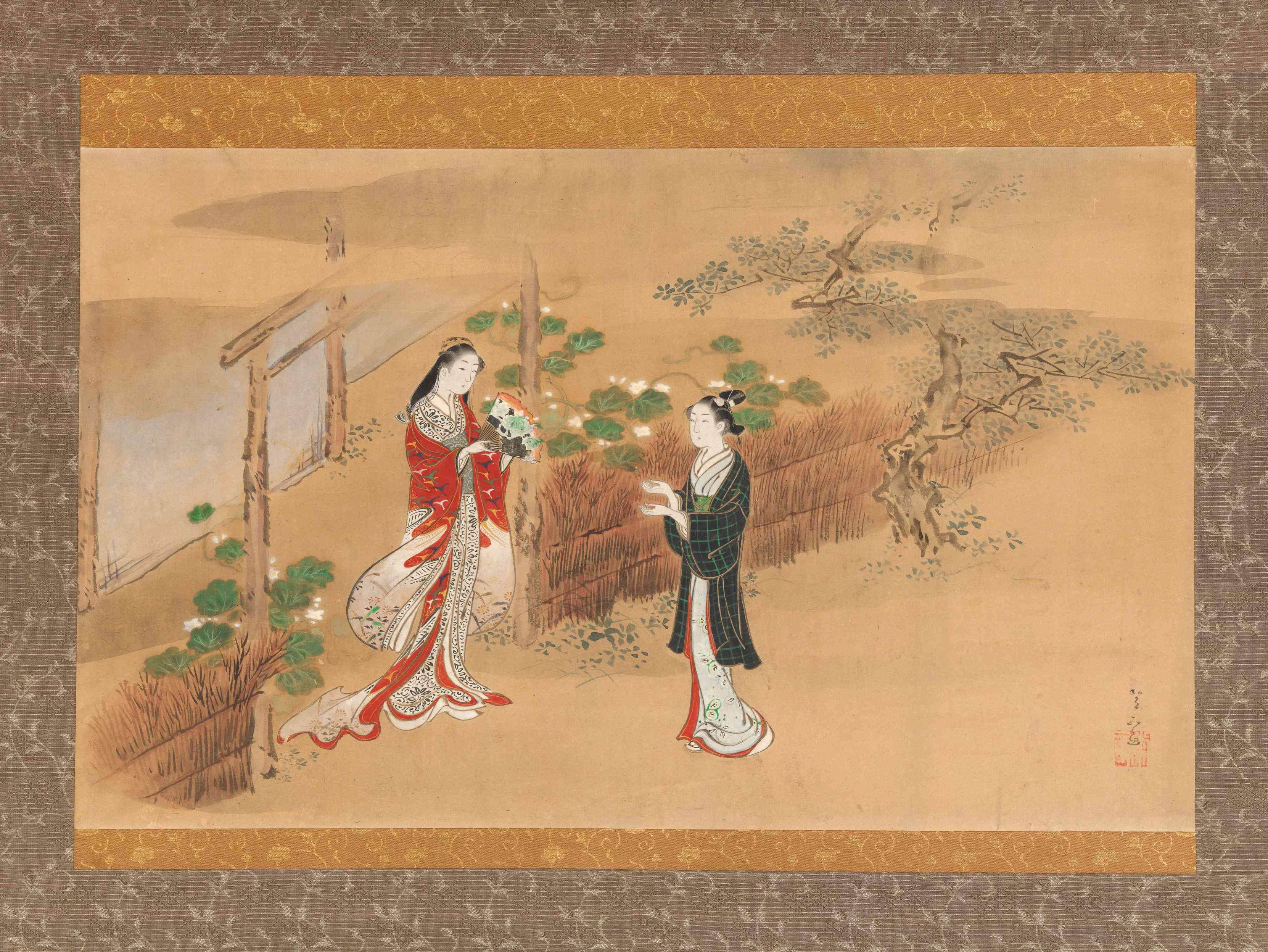"Evening Faces" chapter from The Tale of Genji (Genji monogatari) - Kawamata Tsunemasa
Evening Faces: A Glimpse into Heian Romance and Transience

Artist: Kawamata Tsunemasa (active early 18th century)
Title: “Evening Faces” (Yūgao) chapter from The Tale of Genji
Medium: Hanging scroll, ink and color on paper
Period: Edo period, Japan
The Story Behind the Image
This elegant Edo-period painting captures a poignant scene from the fourth chapter of *The Tale of Genji*, the world's first psychological novel, written by Murasaki Shikibu in the early 11th century during the Heian period. The story follows the life and loves of Hikaru Genji, a nobleman whose beauty and sensitivity captivate all he meets. In “Evening Faces,” Genji meets a mysterious, gentlewoman—Yūgao—amid a summer garden blooming with delicate white flowers that share her name.
In this scene, we see Yūgao accepting a fan adorned with blooming flowers, perhaps symbolizing her fleeting fate. The graceful curves of her kimono and the garden setting evoke a mood of intimacy and ephemerality—a hallmark of *mono no aware*, the Japanese sensitivity to impermanence.
Cultural Significance
In Heian Japan, aesthetics and courtly behavior were refined to the point of ritual. Poetry, layered clothing, and emotional restraint all played key roles in interpersonal relationships. Tsunemasa’s rendering does more than illustrate a literary moment—it honors a golden age of Japanese aristocratic culture and the rise of women writers in a deeply male-dominated world.
Edo-period artists like Tsunemasa revisited Genji not just for its romantic narratives but for its nostalgic aura—idealizing a lost era of poetic grace and spiritual subtlety. The restrained composition, the soft brushwork, and the glowing fabric patterns all reflect this longing.
Thematic Echoes
Yūgao’s story is brief and tragic—she dies mysteriously soon after meeting Genji, possibly the victim of a jealous spirit. Her ghostlike fate serves as a reminder of life’s brevity. Tsunemasa's work does not focus on her death but on a tender moment of connection, thereby reinforcing the aesthetic ideal of cherishing beauty precisely because it cannot last.
Text by: [Your Name or Alias]
Comments
Post a Comment